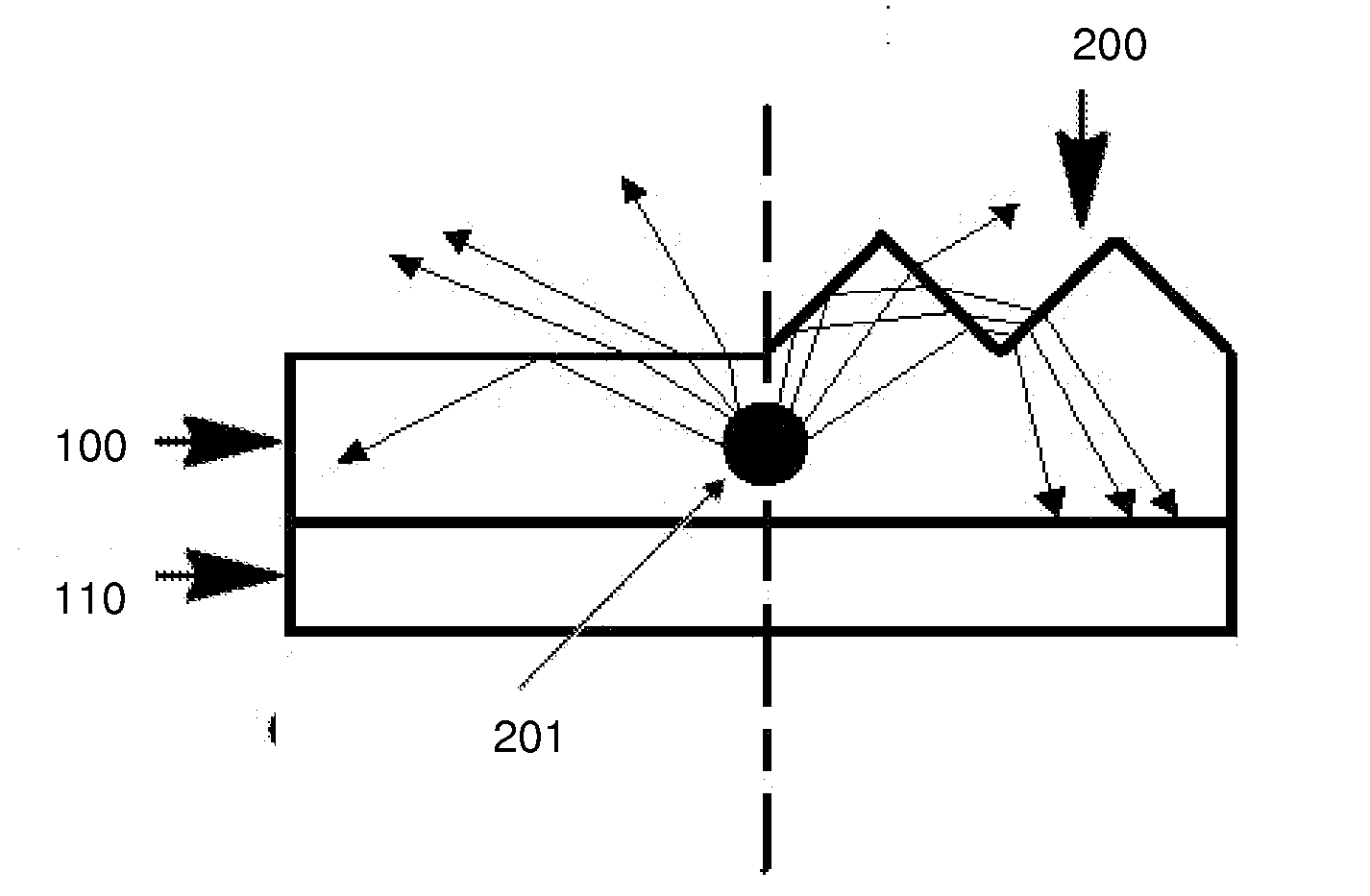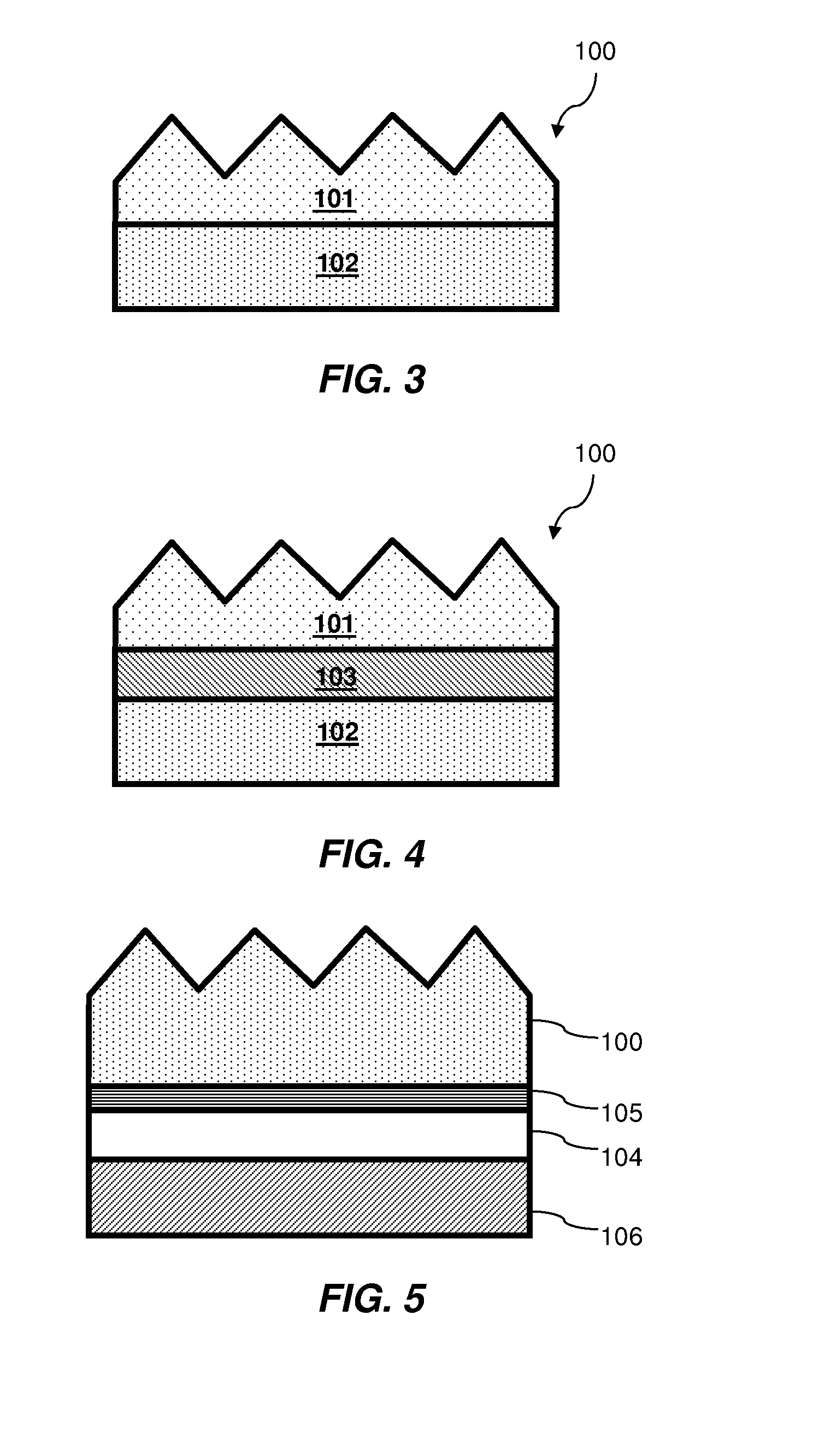Microstructured wavelength conversion films for enhanced solar harvesting efficiency
- Summary
- Abstract
- Description
- Claims
- Application Information
AI Technical Summary
Benefits of technology
Problems solved by technology
Method used
Image
Examples
example 1
[0148]A microstructured wavelength conversion film, which comprises a luminescent medium layer 100 comprising an optically transparent polymer matrix and at least one luminescent dye was manufactured with a top surface textured with predefined structures, as illustrated in FIG. 2.
[0149]First, the luminescent medium layer is fabricated by (i) preparing a Polyvinyl butyral (PVB) polymer solution by dissolving a PVB powder (from Aldrich and used as received) in TCE (from Aldrich and used as received) at a predetermined ratio of 20 wt %; (ii) preparing a luminescent dye containing a PVB matrix by mixing the PVB polymer solution with the synthesized Compound 2 at a weight ratio (Compound 2 / PVB) of 0.3 wt % to obtain a dye-containing polymer solution; (iii) forming the dye / polymer thin film by directly casting the dye-containing polymer solution onto a glass substrate, then heat treating the substrate from room temperature up to 100° C. in 2 hours, completely removing the remaining solven...
example 2
[0153]A microstructured wavelength conversion film, which comprises a microstructured polymer layer 101 with a textured top surface, and a luminescent medium layer 102 made of an optically transparent polymer matrix and at least one luminescent dye, is fabricated as two separate thin films, as illustrated in FIG. 3.
[0154]First, a plain luminescent medium layer is fabricated by (i) preparing a Polyvinyl butyral (PVB) polymer solution by dissolving a PVB powder (from Aldrich and used as received) in TCE (from Aldrich and used as received) at a predetermined ratio of 20 wt %; (ii) preparing a luminescent dye containing a PVB matrix by mixing the PVB polymer solution with the synthesized Compound 2 at a weight ratio (Compound 2 / PVB) of 0.3 wt % to obtain a dye-containing polymer solution; (iii) forming the dye / polymer thin film by directly casting the dye-containing polymer solution onto a glass substrate, then heat treating the substrate from room temperature up to 100° C. in 2 hours, ...
example 3
[0156]A microstructured wavelength conversion film was obtained in the same manner as in Example 2 except that the luminescent dye used was a mixture of Compound 2 (0.3 wt %) and Compound 5 (0.3 wt %).
PUM
 Login to View More
Login to View More Abstract
Description
Claims
Application Information
 Login to View More
Login to View More - R&D Engineer
- R&D Manager
- IP Professional
- Industry Leading Data Capabilities
- Powerful AI technology
- Patent DNA Extraction
Browse by: Latest US Patents, China's latest patents, Technical Efficacy Thesaurus, Application Domain, Technology Topic, Popular Technical Reports.
© 2024 PatSnap. All rights reserved.Legal|Privacy policy|Modern Slavery Act Transparency Statement|Sitemap|About US| Contact US: help@patsnap.com










